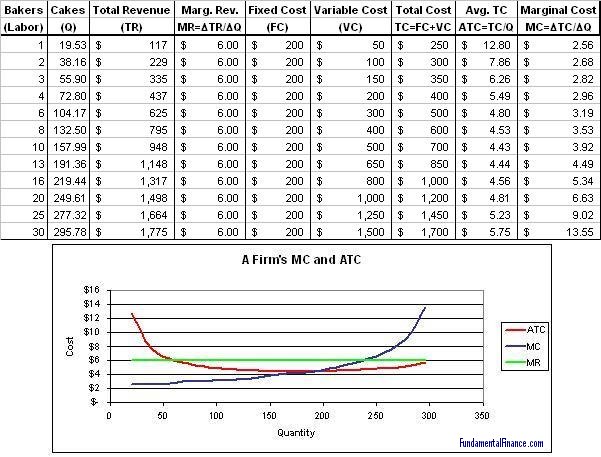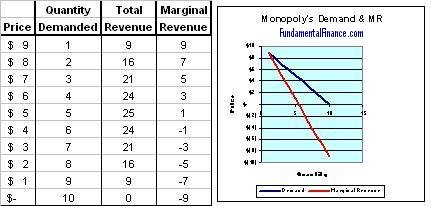Marginal Revenue
Revenue is simply the amount of money a firm receives. If a firm is selling one product at a homogenous price (each unit sold is the same price) then total revenue will equal price times quantity.
TR = P * Q
Marginal revenue is another important measure. Marginal revenue is the revenue obtained from the last unit sold. This is computed by taking the change in total revenue divided by the change in quantity.
MR = Change in TR / Change in Q
For competitive firms, marginal revenue isn't very interesting. If all units are sold for the market price, then marginal revenue will simply be the market price. In the table below, you can see that the marginal revenue is constant for all cakes sold--$6. From that information, and by remembering that we are talking about a competitive market, we can easily tell that the market price for cakes is $6. So the last cake will be sold for $6 as long as the market price remains constant. Competitive firms have a constant MR curve. A cake sold for $6 is $6 of additional revenue.

However, marginal revenue is very different for monopolies. Monopolies have a decreasing marginal revenue curve. The marginal revenue a monopoly gets from selling an additional unit will always be less than the price the unit is sold for. Since a monopoly's output affects the market price (unlike a competitive firm's output), the monopolist will get revenue equal to the price from selling an additional unit; however, in order to sell an additional unit, the monopolist must decrease the price for all units sold, and this is revenue that the monopolist loses. The sum of the revenue gained from selling the additional unit and the revenue lost from lowering the price on all units is the monopoly's marginal revenue.

|